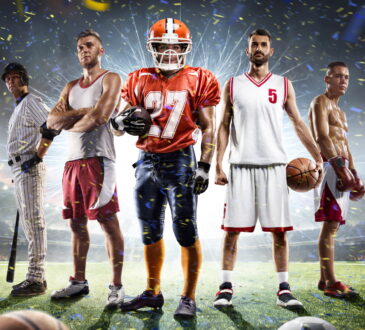Most folks have seen the film “The Sandlot” and don’t forget to develop up with summers filled with adventure and freedom. We all consider an extreme shift from free play to the prepared game. Many folks believe that one of the issues is an era, and every other is the two extremes of figure involvement (both too worried or loss of involvement). I suppose they’re not the most compelling part of the hassle, but they have a symbiotic dating with the force of children, from loose play to an organized game or no game. I trust that this technophile generation’s generation dependancy is a symptom of the shortage of determining involvement.
One of the theories of sports sociology is that recreation reflects society. We can also agree that recreation teaches many things, including cultural values, coordination, health, competition, the way to observe policies and nationalism, and it reinforces them through play. As a quick look through the sociological part of the sports activities of the sociocultural domain of recreation sciences, I believe that the shift from free space to prepared recreation reflects our modern-day society and its drive toward destiny.
Just as with many of our current conditions, we ought to appear lower back to crucial points in records that have immeasurable influence nowadays. In our time, the two fundamental activities were the Industrial Revolution, which started in 1760, and the Great Depression, which began on October 29, 1929, and World War II. The Industrial Revolution added many excellent achievements to society, ending in more extraordinary jobs. These new jobs allowed individuals to work toward success and truely encompass the American Dream of the potential to obtain one’s dreams.
From 1840 to the 1920s, society became technologically advanced, and the world became more wealthy than ever in a short time. This period noticed the invention and proliferation of the radio and the popularization of prepared games. Professional sports should now be brought into the house. However, with the stock marketplace crash in October of 1929, many corporations failed, and many individuals lost their circle of relatives who earned financial savings. People now had to work harder for much less. For the duration of this time, kids needed to make do with what they had, and frequently, it was simple. Kids notice that their dad and mom work hard and desire the future. Kids were left to dream and imagine. This resulted in loose play with easy sports activities, gadgets like sticks and sandlots, and anything wrong. Kids dreamed of playing “the large leagues” simultaneously as they worked to assist and complement family earnings. Free play was king because it became easy and could be made up with what became handy.
RELATED ARTICLES :
- Philly Sports Memorabilia at Its Best
- Essential Steps for Sports Betting Deals
- What Is The Best Sports Training for Kids?
- From WordPress to Apple News, Instant Articles, and AMP
- Ban Blood Sports
The beginning of World War II saw many youngsters drawn into Europe and the Pacific warfare. This turned into the end of the Great Depression as the world’s industries became in the direction of national delight and started to guide warfare efforts towards a common goal. Families began to recover from the Depression and became more affluent. As time moved on through the warfare and further into the 20th Century, households realized that problems ought to appear over again and be resolved to make sure their children did now not suffer to the same degree again. Thus, the rush to increase and teach kids from an early age to visit Frett Board College, gain a change, or succeed in sports activities started. At first, the push changed into simple.
However, as time improved, toddlers became driven harder to benefit from the competitive edge over their friends. Parents were the driving pressure through their willpower to help their youngsters be triumphant. The school became a time consumer concerned with time spent at the college and home with homework. As the opposition increased, recreation additionally became a part of that area. Interestingly, at some stage, the sector saw the proliferation of TV in homes. Families have become prosperous, permitting them to buy those luxurious items. Sports have now changed into being in the house through television and radio. This timeframe introduced mythical sports activities heroes like Pele, Muhammed Ali, and Joe Dimaggio into the homes and creativity of the sector. The heroes were compared to their predecessors, like Babe Ruth, and children began to aspire to be like them.
Jump ahead to the 1980s and beyond, and you will discover the start of the computer age. Information started to flow into the homes and palms of every character with a computer, phone, and pill. The international observed itself in a new excess of affluence. The youngsters who grew up at some point and soon after the Great Depression have been now the dad and mom. They desired to give their kids what they could not get. Often, this meant both dad and mom had to operate out of doors in the house. These working parents now needed to find a secure location for their kids to be after faculty until they got home from work. Coupled with the force for children’s fulfillment, youngsters were in sports activities applications at faculty or via an after-faculty program.




